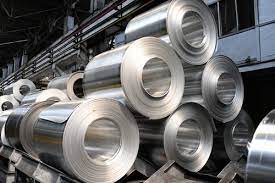At a time when analysts expect the global demand for aluminum to rise, a new development in China may significantly impact both aluminum market demand and the country’s internal consumption. That said, market watchers know that any announcement around metals coming out of Beijing these days also has to be looked at through the lens of the ongoing tariff war with the United States.
It’s a pivotal moment for China’s aluminum industry, even as the nation’s production capacity nears its government-imposed annual limit of 45 million tons (MT). The government set that ceiling in order to address overcapacity and reduce emissions. However, it unveiled a fresh plan last week—one that spells out several “ambitious” new goals for the aluminum sector.
Anything that China says or does these days where metals and minerals are concerned makes experts and markets sit up and take note. China is the largest producer and one of the biggest consumers of aluminum, producing about 43 MT annually. As a result, experts and analysts are now scurrying to make sense of the MIIT report and its potential impact on aluminum and bauxite, the latter being the primary source of alumina.
China Intent on Remaining the Global Aluminum Market Leader
While it may be far too early to accurately predict the final outcome of this new plan, initial reactions by a handful of analysts have said that it could be a two-fold attempt by China. They theorize the plan will not only streamline the industry, but allow the country to go “all in” on a greener method of production, thus helping it retain its leadership position in the aluminum market.
Only time will tell how it will pan out, but the anticipated slowdown in China’s aluminum production had the industry on edge long before the release of this report. This year, aluminum production in China will likely grow by barely 2%. Next year, some experts predict the figures could be even worse. Meanwhile, the situation remains extremely fluid, especially after the U.S. recently announced the imposition of a 25% tariff on steel and aluminum imports from all other countries, including China.
Salient Features of the New Plan
The new Chinese roadmap stresses better and more eco-friendly output where aluminum is concerned, as well as an improvement of the resilience and security of the aluminum supply chain. According to reports, the blueprint also spelled out targets along the two-year timeline for boosting the robustness of the raw material supply chain, using technology to innovate the production and promoting sustainable production.
The plan also includes proposals to expand processing hubs. This includes boosting energy-efficient electrolytic aluminum capacity to over 30%, increasing clean energy use to at least 30% and enhancing red mud recycling to over 15%.
Technological advancements will likewise focus on breakthroughs in low-carbon smelting and precision processing, driving new growth in aluminum consumption. The goal is to establish a high-quality development framework by 2035, ensuring China remains a global aluminum market leader.
The Bauxite Race
The reality of today’s aluminum market is that everybody, including China and the U.S., is looking around for high-quality bauxite ore. For example, China’s bauxite imports in the first nine months of 2024 were 20% higher than the previous year. This report, quoting S&P Global, said Beijing’s dependence on imported bauxite was about 57%, with most of its supply coming in from Guinea.
However, disruptions in that supply chain, coupled with cutbacks by other suppliers like Australia, has left China and the rest of the world looking for other global suppliers.
An article in Forbes said that in the last two years, the price of Guinea ore increased to US $75/t, a rise of about 50%. Meanwhile, Australian ore price increased 60% at $55/t. Alumina and aluminum prices have also climbed, with the former surging 140% in the past year due to supply disruptions and refinery shutdowns in Australia.
Likely Impact of the New Plan
The slowdown in aluminum production, the deletion of tax rebates on exports and a bevy of other factors are bound to cut down China’s export numbers in the coming weeks. This, in turn, will negatively impact aluminum prices. With the announcement of the “aluminum sector makeover” plan, production dynamics will shift as China stresses cleaner production and higher-quality ores.
Under the new plan, China clearly wants to cut reliance on bauxite by boosting recycling, aiming for a 15 MT increase in recycled aluminum output. Much of the plan focuses on improving energy efficiency by investing in tech to cut energy use and lower emissions for this sector.
The opinion is that it’s not merely about producing cleaner aluminum, but that China is jockeying to make aluminum more sustainable so it can maintain its global position at the top of the aluminum market.
How Will the Changes Affect the U.S.?
Like China, the U.S. also relies heavily on bauxite imports. Last year, import figures for crude and dried bauxite ore into the U.S. saw a slight drop, though it was higher in the fourth quarter. For its part, the United States mainly imports from countries like Jamaica and Turkey.
With China’s new plan, it is important to keep an eye on U.S. aluminum imports from China, Canada and several other countries. Given the ever-changing tariff scenario, the slowing down of China’s aluminum sector, the new China plan and other factors, the U.S. may have to start looking for other sources to fill the expected import shortfall.

 Iran Energy News Oil, Gas, Petrochemical and Energy Field Specialized Channel
Iran Energy News Oil, Gas, Petrochemical and Energy Field Specialized Channel



